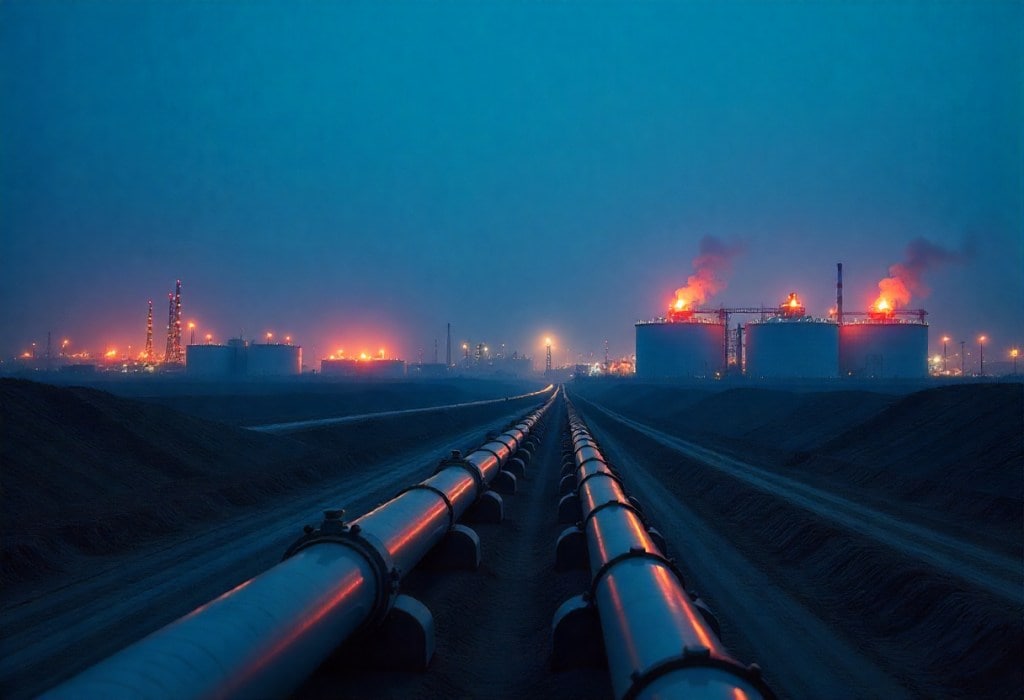India’s gas market is showing signs of strain, and the latest note from brokerage group JM Financial makes it clear why. Demand has flattened, domestic output is slipping, and expensive LNG in Asia is hurting the very companies expected to expand gas consumption. A recent report by JM Financial highlighted how elevated spot prices are changing margins across city gas distributors, transmission firms, and importers, while only those with Henry Hub-linked contracts are finding some breathing room.
Henry Hub is the US reference point for natural gas prices. When LNG is sold from America, the price is often linked to Henry Hub.
As per the report, US Henry Hub prices have stayed around $3–3.5/mmbtu, far below Asian spot LNG at $11–13/mmbtu. This gap makes Henry Hub-linked cargoes significantly cheaper on a delivered basis, which explains why GAIL, with its US-linked contracts, is better placed than city gas distributors that rely more on spot LNG.
At the most basic level total gas demand in August 2025 stood at roughly 190 mmscmd, a drop of about 1.2% from a year earlier. The Jul–Aug average for FY26 to date was only marginally higher at 192 mmscmd, down 1.0% YoY. Domestic consumption slipped further about 92 mmscmd in the first two months of the quarter, falling 4.7% YoY while LNG deliveries accounted for nearly 99 mmscmd in August. The numbers show a market not in expansion but in a cautious holding pattern, the report revealed.
JM Financial on Indian gas market: Demand and supply dynamics
The report’s demand and supply data point to a market stuck in place. Demand is hovering near 190–192 mmscmd, domestic production keeps sliding lower, and LNG imports are not picking up because high spot prices make them unattractive. To put it simply, India’s gas story is stagnating under the twin weight of expensive imports and weaker local output.
JM Financial on Indian gas market: Costs and pricing gaps
Costs is at the heart of the stress. Asian spot LNG is trading around $11–13/mmbtu, far above the long-term norm tied to crude. The comparison with other benchmarks is stark: US Henry Hub-linked cargoes land at a much cheaper rate, while crude-linked contracts sit somewhere in between. This pricing spread is crucial; it explains why companies tied heavily to spot supply are losing ground, while those with Henry Hub-linked volumes, such as GAIL, are benefiting from lower landed costs, the report added.
JM Financial on Indian gas market: Global supply outlook
Another important set of numbers in the report highlights global capacity additions. Nearly 210 mmtpa of new LNG liquefaction capacity is expected to come online from 2026 onward, led by projects in the US, Qatar, Russia and Canada. The implication is clear: if these projects materialise on time, spot prices could ease and demand may recover. Until then, India’s buyers will continue to pay more for their cargoes.
JM Financial on Indian gas market: Spotlight on key companies
Gujarat Gas
The report calls Gujarat Gas vulnerable. Roughly 20–30% of its volumes come from spot LNG, which means when spot is high the company has little choice but to absorb the cost. For a distributor serving price-sensitive industries, that is a serious disadvantage. Gujarat Gas is effectively paying more for gas that competitors in other fuels can undercut.
Indraprastha Gas (IGL)
Indraprastha Gas faces another problem i.e reduced allocation of cheaper APM gas. As the JM Financial report, less APM means IGL has to buy more expensive market-priced volumes to keep CNG pumps running. The economics of CNG, which drive much of its business, weaken as a result.
Mahanagar Gas (MGL)
Mahanagar Gas is in the same boat as IGL. Allocation changes force it toward higher-priced volumes. For a city gas distributor whose bread and butter is CNG and household PNG, sustained high spot LNG is a direct hit on margins, the JM Financial report added.
GAIL
GAIL, by contrast, stands out in the report as more resilient. Its Henry Hub-linked LNG contracts are proving profitable at current spreads. The company’s portfolio and trading flexibility allow it to capture gains that others cannot. The caveat is clear though if Henry Hub rises sharply, the advantage could vanish.
The report cited nearly 210 mmtpa of new LNG liquefaction capacity expected from 2026 onwards, with major projects in the US, Qatar, Russia and Canada. The bars rise steeply after 2026. This is the hope that more supply could drag spot prices back toward historical norms. But until those projects come online, India remains exposed to costly cargoes.
Petronet LNG
Petronet LNG appears in the note as the key regasification player. Its long-term RasGas contract, priced off crude, offers a different cost profile than spot cargoes. But when overall demand is weak, terminal utilisation drops. The JM Financial report notes a decline in regas use during this high-spot period, which caps revenue for Petronet despite its contract base.
Gujarat State Petronet (GSPL)
For GSPL, the issue is transmission volumes. Lower LNG demand and weaker industrial uptake mean less gas flowing through pipelines. While fixed fees provide some stability, variable throughput-linked income takes a hit, the report added.
JM Financial on Indian gas market: Risks and signals
The report identified clear risks. Execution delays in the global capacity buildout could prolong high spot prices. European storage dynamics and geopolitical shifts add uncertainty. On the domestic side, further slippage in production would increase import dependence. Investors, the report suggests, should keep an eye on JKM levels, Henry Hub, India’s monthly output data, regas utilisation, and APM allocation decisions. Each will decide whether margins worsen or improve in the months ahead.


